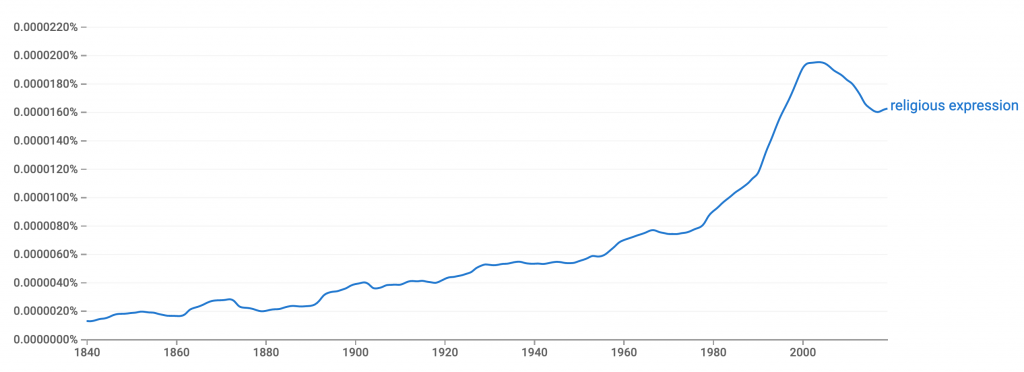 The common English phrasing “religious expression” carries with it a set of assumptions about what scholars of religion study as well as how and why they study it, though the term is today so widespread that I doubt many think much about what it entails.
The common English phrasing “religious expression” carries with it a set of assumptions about what scholars of religion study as well as how and why they study it, though the term is today so widespread that I doubt many think much about what it entails.
To shed a little light on it, consider the following quotation from the English philosopher Robert William Mackay (1803-1882), appearing in volume 1 of his two volume work, The Progress of the Intellect, as Exemplified in the Religious Development of the Greeks and Hebrews (1850):
All religious expression is symbolism, since we can describe only what we see, and the true objects of religion are unseen. Religious forms differ according to external circumstances and imagery, or again according to differences of knowledge and mental cultivation… (134)
I would argue that this philosophically idealist logic still drives scholars’ choice to characterize what they study as expressions — an English word that derives from Latin and which literally means to press something out. (And thus it is not an accident that a type of pressed coffee which many people enjoy is, in Italian, known as espresso.)
There’s a classically Cartesian model of the human presumed here (common to both those who study religion theologically as well as humanistically, I should add); dynamic meaning originates from somewhere on the inside and it is only later “put into words” and thereby pressed outward into the world where, of course, it is prone to be misinterpreted. “That’s not what I meant” we frequently say as a way to rebut how it seems that someone has heard us, with various readers then disputing “what they author meant.” Accordingly, a specific type of subjectivity is also assumed — the unified and interior thing supposedly signified so easily by the first person singular pronoun.
So the next time someone talks about religious expressions — whether in an article on religion and the U.S. public school system, as part of a description of a Department of Religious Studies or maybe just one of its courses, or even a book on religion in the workplace, not to mention an article on multiculturalism or perhaps a site devoted to human rights — pay attention to the work that this designator is doing; for it’s hardly innocently descriptive (after all, there are other views on how this thing called the subject is constituted). Instead, it is socially formative; those using it are making a claim about the human, about the workings of meaning, about interpretation, and about the self and how it ought to be read by others. And this makes claims about this thing we call religious expression far more interesting than they might at first seem, for they turn out to be the tip of a very large modernist iceberg.